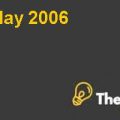Summary
This case introduces Zappos.com, an online shopping store, engaged in providing shoes and clothing items for both men and women available in the market. The company was established in 1999 based in Las Vegas, Nevadaby Nick Swinmurn, who found the inspiration for the idea, when he failed to find a particular pair of shoe in the mall. Therefore, he collaborated with Tony Hsieh and Alfred Lin to sell different variety of shoes online, which helped the companyto target a vast range of customers present in the online market.Furthermore, the company was acquired by Amazon.com in 2009, as the all-stock deal was worth $1.2 billion, as announced by the senior management of the company in the same year. Whereas, it was evaluated that the users available online were not all potential shoppers, as most were casual viewers logging on to adifferent site just to pass time. However, it wasidentifiedthat the company had grown since its establishment towards selling a huge variety of shoe available from a vast variety of brand available in the market. Moreover, the company increased its product range, which included clothing items for both men and women, as well as accessories such as hand bags and wallets.
Additionally, they also sold athletic equipment and kids’ necessity items, such as diaper bags, clothing, etc. It can be further stated that the company had significantly increased its product range and its ability to attract the customers. Moreover, it had also developed a strong brand image in the market through the implementation of effective marketing strategies, which, in turn, allowed the company to increase its revenues streams, which had a substantial favorable impact on its profitability in the market.
Zappos.com Harvard Case Solution & Analysis
Additionally, in an attempt to better manage its operations, the company had divided its customers into different segments, which consisted of premium customers, who were the most profitable and loyal towards the site and were considered as recurring customerswho were highly costly to acquire with the potential to purchase higher value items for the store. Secondly, young professionals, who had trouble managing their work life were not that costly to acquire in the market and they were considered the least loyal customers for the company. Thirdly, the off-price customers were frequent users of the internet and they compared the price of the product offered by them and others available in the market, which allowedthese users to establish their purchasing patterns using the comparative analysis. It was assessedthat these users’ buying patterns were motivated by any discount offers given by various sites available online. Lastly, the family customers, who were busy with their families spent the least amount of time on the site and were considered least profitable for the company, attributed to their higher return rates.
However, it was determined that the management of the company faced a major challenge in developing effective and efficient pricing policies, which allowed the managementto target the customers present in different consumer segments developed by the senior management of the company.....................
This is just a sample partical work. Please place the order on the website to get your own originally done case solution.











